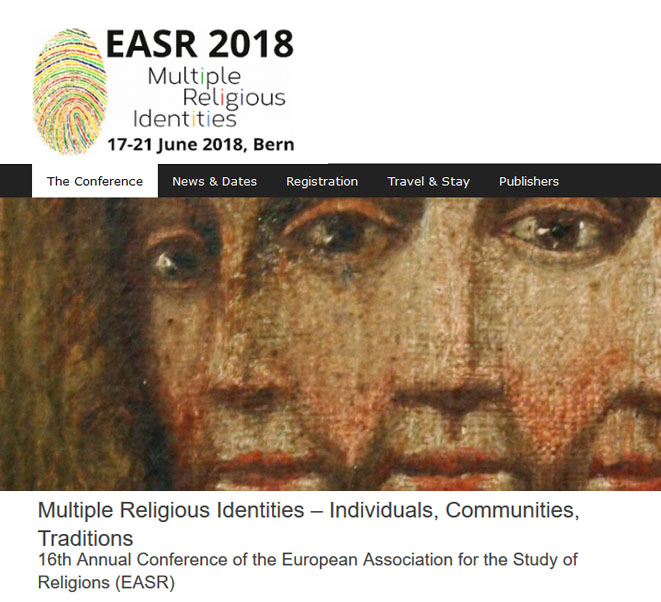Il XXI secolo si è aperto all’insegna di incomprensioni e conflittualità non risolte, fra culture e fedi diverse, mentre cresce, al contrario, il bisogno di conoscenza di identità distanti. Individuare ciò che unisce e scartare quello che divide o, con le parole di Giovanni Paolo II: “gettare ponti invece di elevare muri”, dovrebbe essere un dovere.
La situazione attuale che vede il diffondersi di scontri, violenze, persecuzioni che si presume siano motivate da ragioni di tipo religioso, rende tanto più urgente un passo avanti verso il dialogo.
Di qui la necessità di un incontro a carattere ecumenico inter-religioso e che ponga le basi sul piano architettonico, sul reciproco rispetto delle specifiche identità.
Già da tempo esistono luoghi nei quali possano celebrare comunità appartenenti a diverse Chiese cristiane, in qualche caso anche appartenenti a diverse religioni. Spesso questi luoghi si presentano eccessivamente poco caratterizzati per non essere ritenuti patrimonio di qualcuno in specifico e finiscono per non appartenere e non rappresentare nessuno.
Laddove, invece, nella tradizione delle grandi religioni, i luoghi di preghiera sono sempre fortemente caratterizzati e restano come capolavori dell’ingegno umano, proprio perché frutto di una partecipazione intellettuale ed emotiva convinta e forte: lo testimoniano le tante chiese di diverse denominazioni che caratterizzano da secoli le nostre città, ma anche le moschee che sorgono in diversi luoghi (soprattutto in Asia), le sinagoghe che in diversi continenti esprimono l’appartenenza al popolo ebraico.
Relativamente all’architettura, si può dire che ad oggi esistono degli spazi “multireligiosi” che però non hanno una definizione simbolica precisa. Sono delle stanze ibride e multifunzionali, come per esempio la Rothko Chapel (una cappella aconfessionale a Houston, Texas, fondata da John e Dominique de Menil) e le stanze di raccoglimento sempre più diffuse all’interno degli aeroporti o degli ospedali.
Un passo in più si sta facendo a Berlino con il concorso internazionale di un centro interreligioso che tenta di unire sotto lo stesso tetto le tre religioni monoteistiche vinto, due anni fa, dallo studio di architettura Kuehn Malvezzi, fondato dall’italiana Simona Malvezzi e dai tedeschi Wilfried e Johannes Kühn.
Con questa panel si intende porre le basi per una definizione tipologica di un luogo certamente
In questo senso, due sono le domande fondamentali: come mettere in relazione questi nuovi spazi urbani con la città e come affrontare la convivenza tra le tre religioni monoteistiche nello stesso spazio? Data la sensibilità a quest’ultima questione, il progetto architettonico si proporrà in modo da soddisfare le esigenze individuali e respingere l’imposizione di un corso specifico. i centri culturali inter-religiosi saranno luoghi di studio, dialogo e preghiera per le tre religioni monoteistiche, capaci di divenire spazi per l’integrazione basati sul reciproco rispetto delle specifiche identità. Un luogo quindi, o una serie di luoghi coordinati tra loro, che parlino della cultura contemporanea, del dialogo, dell’incontro, dell’identità come fattori tra loro coerenti.
Il progetto, per questo motivo, sarà caratterizzato sia da luoghi per la preghiera sia da luoghi per l’attività culturale, prevedendo anche la presenza di un parco. Ci sarà, infatti, un centro educativo e culturale formato da una biblioteca, da una sala esposizioni, da aule per la lettura e per la riunione. Per quanto riguarda lo spazio sacro ci saranno tre sale di culto per le tre diverse religioni monoteistiche. L’aggregazione di questi luoghi sarà impostata su uno spazio interstiziale, pieno di sfumature e di esperienze sensoriali, incaricato di risolvere le due questioni principali del progetto.
The XXI cent. opened with unresolved misunderstandings and conflicts between different cultures and faiths opened while the need for knowledge of different identities were growing up.
The current situation sees the spread of clashes, violence and persecutions motivated by religious reasons and a step towards inter faith dialogue is needed urgently.
Hence the need for an ecumenical inter-religious meeting to lay the foundations for the architectural level, on the mutual respect of specific identities.
Since some time on, place where different communities and religions can celebrate have been built. Often these places are excessively poorly characterized that are not considered someone’s in specific and, at the end, do not belong or represent anyone.
With regard to architecture, we can say that today there are “multireligious” spaces that don’t have a precise symbolic definition. They are hybrid and multifunctional rooms, such as the Rothko Chapel (a non-confessional chapel in Houston, Texas, founded by John and Dominique de Menil) and the increasingly widespread meditation rooms inside airports or hospitals.
Two years ago a progress on this sense was done in Berlin with an international competition for an inter-religious centre that put together the three monotheistic religions under the same roof, won by Kuehn Malvezzi architectural firm.
Whereas, in major religions the places for prayer are always strongly characterized and remain as masterpieces of human talent, because they are the result of a convinced and strong intellectual and emotional participation.
So many churches in our cities testify it, but also the mosques arose in different places (especially in Asia) and the synagogues that in different continents express the belonging to the Jewish people.
With this panel we intend to lay the foundations for a typological definition of a place certainly
In this sense, two are the fundamental questions: how to put in relation this new urban space with the city and how to deal with the coexistence of the three monotheistic religions in the same space? In consideration of the sensitivity to the last question, the architectural project will be proposed to satisfy individual needs and reject the imposition of a specific course. The inter-religious centres will be places of study, dialogue and prayer for the three monotheistic religions, capable of becoming spaces for integration based on mutual respect for specific identities.
For this reason the project, will be characterized both by places for prayer and spaces for cultural activities.
In fact, there will be an educational and cultural centre made up of a library, an exhibition hall, classrooms for reading and meeting. As for the sacred space, there will be three large halls of worship for the different monotheistic religions. The aggregation of these places will be set on an interstitial space, full of nuances and sensory experiences, in charge of solving the two main issues of the project.




Devi essere connesso per inviare un commento.